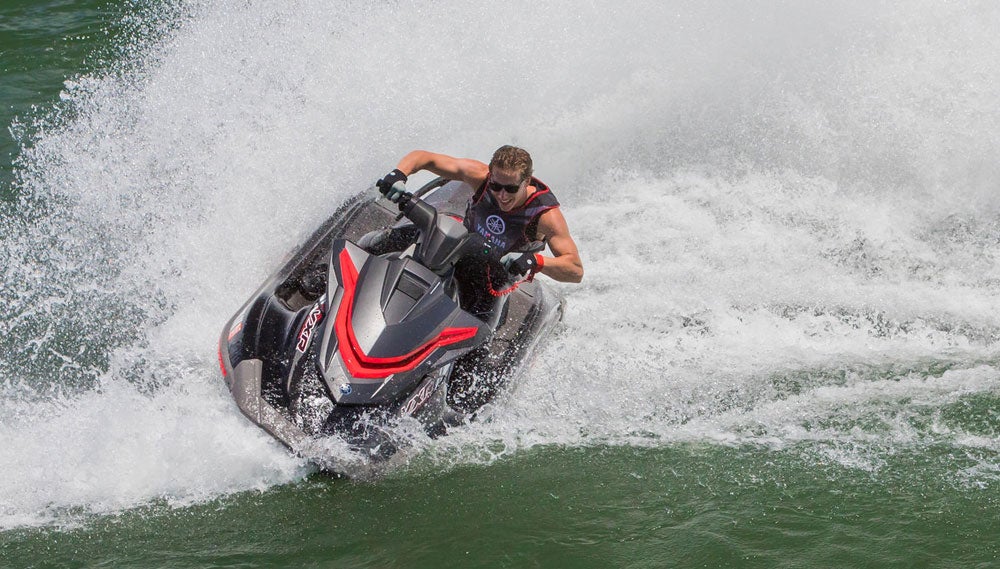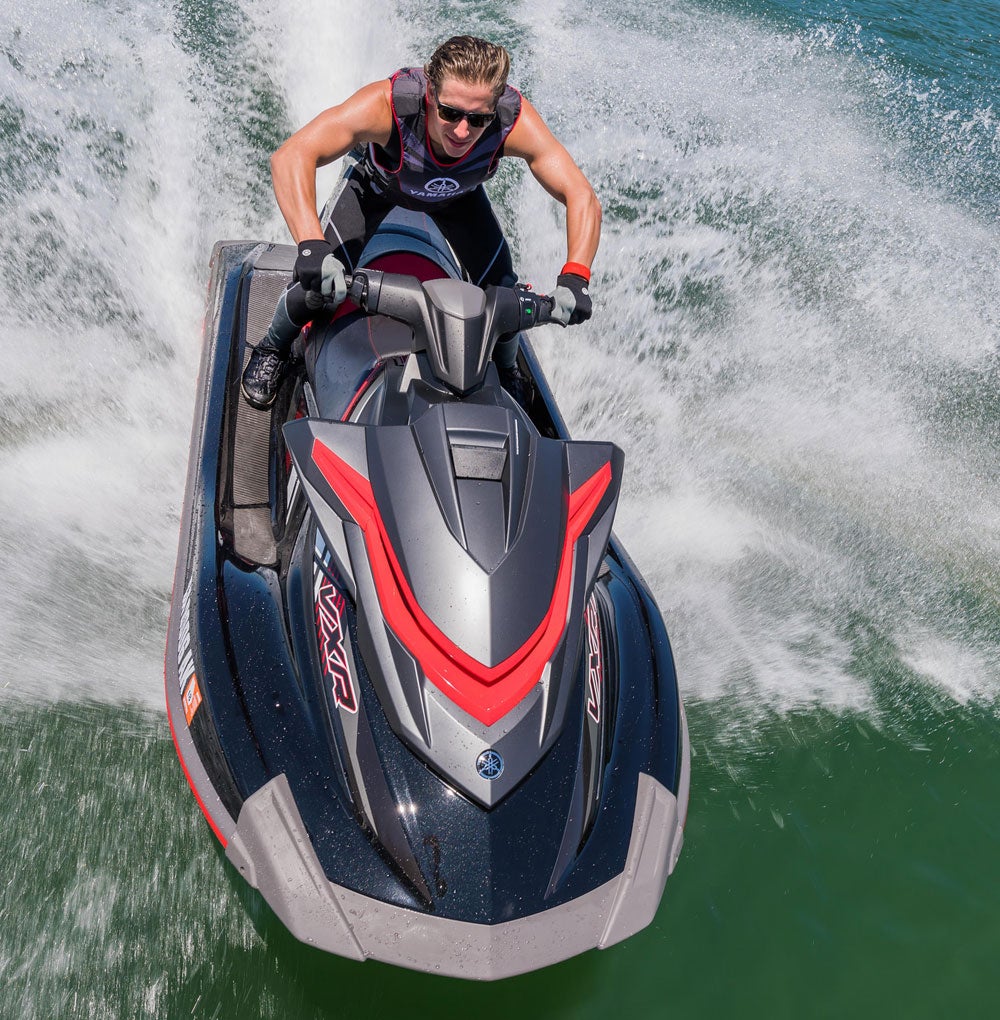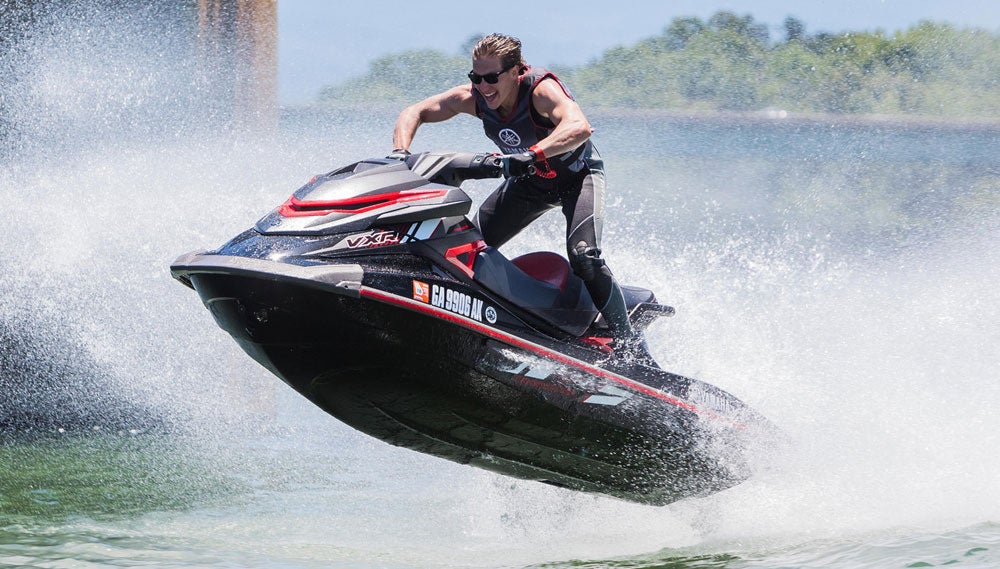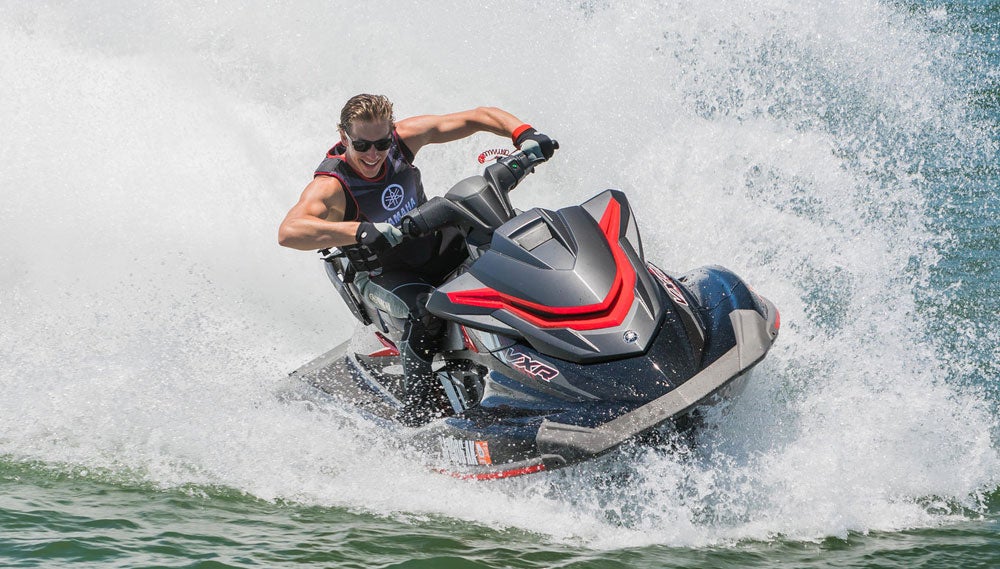2018 Yamaha VXR Review
Engine: Four-cylinder 1,812cc
Fuel Capacity: 18.5 gal.
Stowage Capacity: 24.6 gal.
Seating Capacity: 3
MSRP: Starting at $11,999
Yamaha had a specific goal in mind when the company came out with the VXR in 2011 – to make performance, real flagship-style performance, affordable to more buyers. Until that point, going the magic 65 mph meant spending upwards of $13,000 or more. To change that trend, the company turned to a sort of mix-and-match of a few of the brand’s best models. They borrowed the surprisingly versatile VX hull design. Within, they placed the big-displacement, but compact 1.8-liter engine and left off the supercharger. The result was classic horsepower-to-weight ratio.
The VXR has evolved in the now seven years since, but that basic formula remains the same – big power plus light weight plus low price equals lots of fun.
More than the Sum of its Parts
Naysayers may have thought the weak link to the VXR would be the VX hull, but they were quickly proven wrong. Though it was the introductory platform at the time, and rarely pushed past the mid-50 mph range in terms of top speed, Yamaha recognized it had potential to be handle far more power. In 2015 they tweaked the platform even more, stretching the dimensions, reshaping the keel and strakes, and improving the pump intake and rideplate. Yamaha’s material of choice for hull and deck? The lightweight NanoXcel, further dropping weight from the equation.
The most significant change in 2015, however, may have been to the chines. They were softened forward, improving the boat’s ability to naturally roll into a turn with an intuitive inside lean. The end result is a boat that, once enough power is applied, really shines on the water. It carves aggressively through the corners, shows off Yamaha’s trademark stability in straight-line speed runs and rough waters, and feels pretty much just what it is – a stripped-down race boat.
A hint on getting the most out of the hull? Make liberal use of the fast-acting electric trim. Dropping the bow as you head into a turn really lets the craft work as intended, putting more hull in the water. Raise it as you exit and head out straight to raise that bow, reduce the wetted surface, and achieve the maximum top speed.
The engine of choice remains the 1,812cc four-cylinder that now has a long track record of reliability. A supercharger remains absent, both to lower purchase price and lessen the cost of operation. (For those unfamiliar with forced air induction, it has a healthy appetite for fuel.) Still, the VXR doesn’t really need the supercharger’s addition. Punch the throttle, keep your weight forward and the craft leaps to 30 mph in about 1.8 seconds. Sixty-five miles per hour is also still not a problem, though truth be told I’ve seen more in good conditions.
Performance-Focused Amenities
The VXR’s low-price, high-performance mindset means the craft is stripped of unnecessary frills. The aforementioned electronic trim is one necessary addition, but don’t look for cruise control, no-wake mode or other electronic goodies. Thankfully, the craft has received RiDE in recent years. Yamaha’s “dual” throttle system that pairs the standard forward throttle with an additional throttle used to apply reverse thrust, RiDE has multiple uses. In low-speed operation, it dramatically eases close-quarter maneuvering by letting one lever apply forward momentum, the other reverse momentum, and allows the boat to assume a stationary position when both levers are released. At speed, RiDE can also be used to rapidly slow the craft, using that diverted reverse thrust to push against the craft’s momentum. Diverted water exits the side of the reverse bucket, which allows the VXR to stay level during these abrupt slow-downs. Using RiDE isn’t like shifting gears, but a fluid transition, meaning you can quickly apply it when wanted then just as quickly get back on the normal throttle.
Any other amenities, however, are focused on the task at hand. The bolstered saddle offers the rider support and a locked-in feel; its surface is textured, not slippery, to keep the driver locked in place. Hydro-Turf traction mats serve the same purpose. Electronics are limited to an information display and Yamaha’s remote security transmitter, which locks out the ignition to prevent theft or unauthorized use. That transmitter can also put the craft into a low RPM mode should you need to save fuel or turn over the craft to a novice rider who may not be ready to handle its performance.
Formula For Fun
And yes, novice riders may not be ready to handle that performance. Bargain price or no, this is a high-performance model that offers plenty of thrills but demands an experienced rider at the controls. The “non-flagship-sized” hull also responds with lighting-fast reflexes.
For those up to the task, however, it’s a blast to ride…and affordable to keep on riding.
How affordable? The 2018 sticker reads the same as in 2017 — $11,999. Comparable models? Kawasaki doesn’t really play in this arena; the Ultra LX ($11,099) is geared more toward touring than nimble performance. Sea-Doo, however, has a direct competitor in the GTR 230 ($12,099). Like the VXR, the GTR offers flagship stats. Expect 65 mph with ease and blistering acceleration, but the GTR does use a supercharged engine to achieve it. Like Yamaha’s RiDE, Sea-Doo includes Intelligent Brake & Reverse.
Get PersonalWatercraft.com in your Inbox!
Like PersonalWatercraft.com on Facebook
Related Stories
Comments
Most Popular

2025 Yamaha JetBlaster PRO 2-Up Review

Remembering the Sea-Doo XP

2024 Kawasaki Jet Ski STX 160X Review

Whatever Happened to the Wetbike?

2025 Yamaha JetBlaster Review


















 Your Privacy Choices
Your Privacy Choices